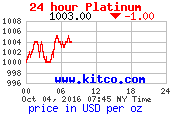Gold and Silver Coins and Bullion
Precious Metals Dealer Portland
Portland Coin Shop
Join Our Precious Metals Sales Email List

Precious Metal Bullion
The purpose of this article is to quickly explain the main aspects of precious metal bullion, the main types and differences between them. After reading this article, you will be more knowledgeable about gold, silver, platinum and palladium bullion.
What is Precious Metal
Precious metals are metals, that because of their rareness, usefulness, stability, and other qualities (like beauty, etc), have a high intrinsic value. There are only five precious metals:
- Gold
- Silver
- Platinum
- Palladium
- Rhodium
What is Precious Metal Bullion
Precious metal bullion is precious metal in highly concentrated purity (fine), presented in an standardized form, easily identifiable and usually branded. Precious metal bullion is valued based on its fineness and mass. The higher the fineness, and the more massive the weight, the more valuable the precious metal bullion is. Most precious metal bullion is if very high fineness. Precious metal bullion can be gold, silver, platinum, palladium or rhodium.
Types of Precious Metal Bullion
There are five types of precious metal bullion
- Rounds
- Bars
- Art Forms
- Bullion Jewelry
- Coins
Rounds
Rounds are cylindrical masses of concentrated precious metal. Some rounds are coins. See below
Silver Round Example:
The standard American silver round. This is .999 pure silver cylinder that is 1/8″ tall, 1 1/2″ diameter and weighs 1 ounce troy.
Gold Round Example:
The Krugerrand. The Krugerrand is a 22K (916 parts per 1000) pure gold. In the Krugerrand, the nominal weight is smaller than the total mass. That is because only the gold content counts as bullion. The rest is copper, used as a hardener. Thus it is not part of the sale.
Bars
A precious metal bar is a cuboid of highly concentrated precious metal. Precious metal range from 1 gram in mass to 40 kilograms. Older gold bars are no less than 995 parts per 1000 pure gold, which is the previous LBMA good delivery standard. Modern gold bars are no less 999 parts per 1000 pure. Most are actually 9999 parts per 10000 pure.
Smaller silver bars, from 1 ounce troy to 10 ounce troy tend to be minted and sold loose, often in plastic protectors. Older and larger silver bars are most often purred, molded and hallmarked.
Modern small gold bars tend to be sealed packaged in “Certi-Card” or similar protectors. Learn more.
Larger bars are poured and hallmarked. Learn more.
Art Form Bullion
Art form bullion is super close to pure silver or gold artistically shaped in the form of an sculptural object. Typically this objects are also dimensioned and massed such that they weigh an exact unit of measure. Art forms can be hollow or solid. What matters really is that they are almost pure gold and the heavier, the better. This is very common in Asia. Korea and China are big on gold bullion art forms.
Example:
Korean gold art form bullion is massed such that the weight is a round multiple of the “don” unit measure. A “don” is 3.75 grams. Learn more.
Bullion Jewelry
Bullion jewelry is super high gold content, 22K to 24K jewelry, that is dimensioned and massed such that they weigh an exact unit of measure. Basically this type of jewelry is wearable and easily transportable wealth. Asian countries are very big on bullion jewelry.
Examples:
Korean “don” gold jewelry is for practical purposes 24K and mass in round multiples of the “don” unit of gold measurement. For example 10 don chain, 2 don ring. Learn more
Thailand Baht jewelry. The baht is a unit of gold that is 23.5K pure. Baht jewelry has the same fineness of baht bullion. Learn more
Coins
Coins are precious metal bullion rounds produced by a government mint. Gold and silver coins have a face value. Silver, gold and platinum rounds that have a face value, and are minted by a government, are coins. Otherwise they are just rounds.
Only governments mint coins. Everybody else mints rounds. Minting coins is a highly guarded government privilege. In the US, the Secret Service is the enforcer of this privilege. If anyone mints anything with a dollar face value, they will very soon have to deal with the Secret Service, and it will not be pleasant.
Imprinted in coins are always symbols of sovereignty. In the English sovereign gold coin, as well as the Canadian Maple Leaf and the Australian Kangaroo, the current monarch is always in the obverse of the coin.
Examples:
- Maple Leaf
- American Eagle
Difference Between Coins and Bullion
Coins have a face value. Bullion does not.
Example:
The South African Krugerrand is a gold round, minted by the Rand Refinery. The South African Rand gold coin is a coin minted by South African Mint.
Resources & Links


![[Most Recent Quotes from www.kitco.com]](http://www.kitconet.com/charts/metals/gold/t24_au_en_usoz_2.gif)
![[Most Recent Quotes from www.kitco.com]](http://www.kitconet.com/charts/metals/silver/t24_ag_en_usoz_2.gif)
![[Most Recent Quotes from www.kitco.com]](http://www.kitconet.com/charts/metals/platinum/t24_pt_en_usoz_2.gif)










